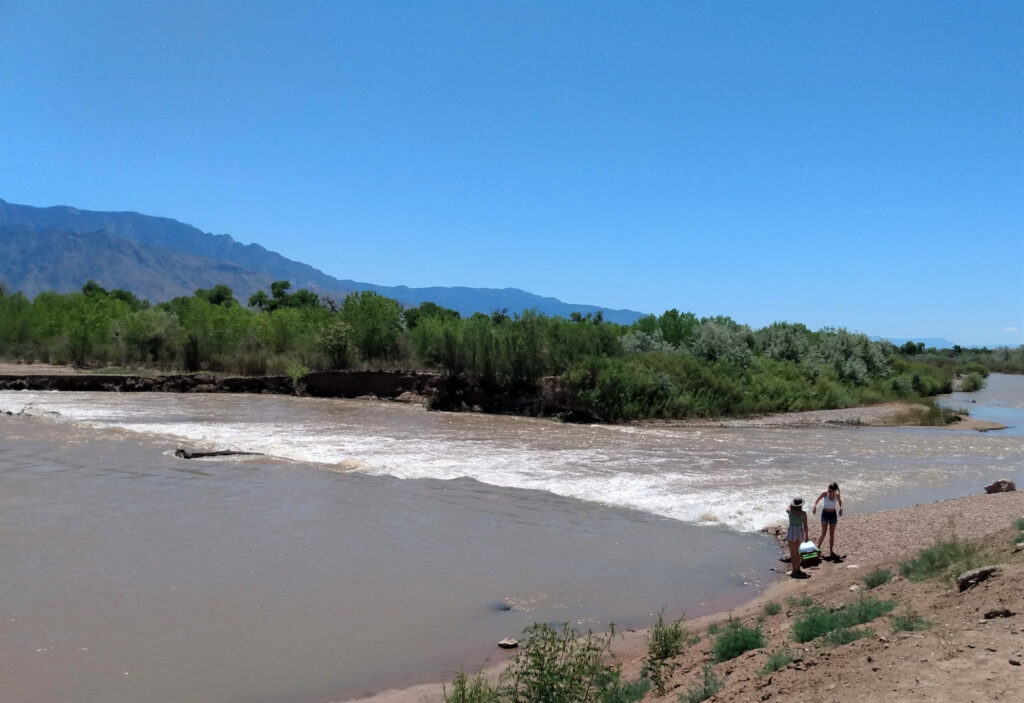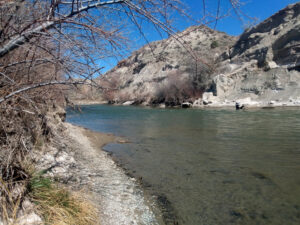Drought limits the ability for an endangered fish to reach adulthood
4 min read
The Rio Grande silvery minnow once swam up and down the Rio Grande, even venturing into the Pecos River. But now its range is limited, in part due to humans, and the drought conditions that have led to reduced spring runoff are limiting the number of wild fish that live long enough to spawn.
The Rio Grande silvery minnow’s habitat has been fragmented, partially due to dams, and the amount of water available for the species has decreased.
This makes it more vulnerable to droughts, according to U.S. Fish and Wildlife Service biologist Thomas Archdeacon, who studies the Rio Grande silvery minnow.
“The biggest issue the fish has is that it’s only in about 5 to 10 percent of its original range,” he said.
Before the range was reduced, Archdeacon said drought likely would not have impacted the entire river system all at once.
But the silvery minnow is now found only in the Middle Rio Grande between Cochiti Lake north of Albuquerque and Caballo Lake to the south.
That means drought conditions can impact the entire population.
The U.S. Bureau of Reclamation is installing fish passages to help the silvery minnows cross the dams. Archdeacon said those passages are needed, but are only one part of the solution.
An attempted reintroduction of Rio Grande silvery minnow into the Big Bend stretch of the Rio Grande in Texas ultimately failed, which Archdeacon said was because of the altered flow regime in the stretch of river.
The Rio Grande silvery minnow was added to the endangered species list in the 1990s and Archdeacon said the recovery efforts haven’t had much success.
And, if there isn’t a good snowpack, the spring runoff that is needed for successful spawning won’t be sufficient.
This year was the second consecutive year of poor spring runoff and, based on past data, that is not good news for the minnow. Archdeacon said this year there will be a smaller number of silver minnows per square mile and the population will be dominated by hatchery-raised fish.
Archdeacon authored a paper that was published last year in the journal Environmental Biology of Fishes that found that following the dry conditions and low spring runoff in 2018, few, if any, newly-hatched fish survived to spawn the next year. In 2019, almost all of the fish caught were two years old or had been raised in a hatchery.
The Rio Grande silvery minnows don’t have a long lifespan. Most die after spawning when they are a year old, though some do live to be two or three years old.
Each fall, hatchery-raised fish are released into the Middle Rio Grande to increase the population prior to the spring spawning season.
“It’s not a replacement for having a functioning system with a good spring runoff that promotes a lot of recruitment,” Archdeacon said, but he said while the hatchery fish are not a solution, it does prevent the problem from getting worse.
Tricia Snyder, the Rio Grande campaigner for WildEarth Guardians, said the Rio Grande is a microcosm of what is happening throughout the west and she compared the silvery minnow to a “canary in a coal mine” as an indicator of river health.
Snyder said climate change is exacerbating the issues that already exist.
The reduced flows in the river are coupled with a variety of demands for water including municipal, industrial and agricultural uses.
Snyder said there needs to be a change in how people value and manage water.
“Farmers need water, cities need water and so do species,” she said, adding that a holistic approach is needed that involves living within the river’s means.
Like many water systems in the west, the Rio Grande is managed based on a compact that was developed to divide up the water between multiple states.
“It’s based on a hydrological model that no longer exists and is unlikely to exist in the future,” Snyder said.
In dry years, sections of the Middle Rio Grande dry up, leaving behind only puddles.
Archdeacon said the Rio Grande silvery minnow cannot survive in shallow, isolated puddles. These puddles tend to have poor water quality and high temperatures, with some measuring hotter than 100 degrees Fahrenheit during the summer afternoons. Archdeacon said the puddles can also have large fluctuations in water temperatures.
Efforts date back to at least 1996 to rescue stranded Rio Grande silvery minnows from these puddles, but that has had little success.
Archdeacon was the lead author on a paper published in December in the journal Water that found rescue may not be effective for conserving the species.
According to the paper, less than 10 percent of the fish rescued from the puddles survived.
Archdeacon is studying the reasons behind that, which could be because of the stress of being taken from the drying puddle, placed in stock tanks and transported out of the puddles. He said the fish could also be in such bad shape prior to being rescued that they cannot survive.
Snyder said she has hope that a solution can be found that will help the Rio Grande ecosystem while still meeting the water needs. She said having a healthy Rio Grande is a key component to quality of life in Albuquerque, where people enjoy walking along the bosque.
However, she emphasized that action is needed and said “we don’t have another decade to keep messing around.”
“We need to be able to come together and talk to each other,” Snyder said.
This article was originally posted on Drought limits the ability for an endangered fish to reach adulthood






